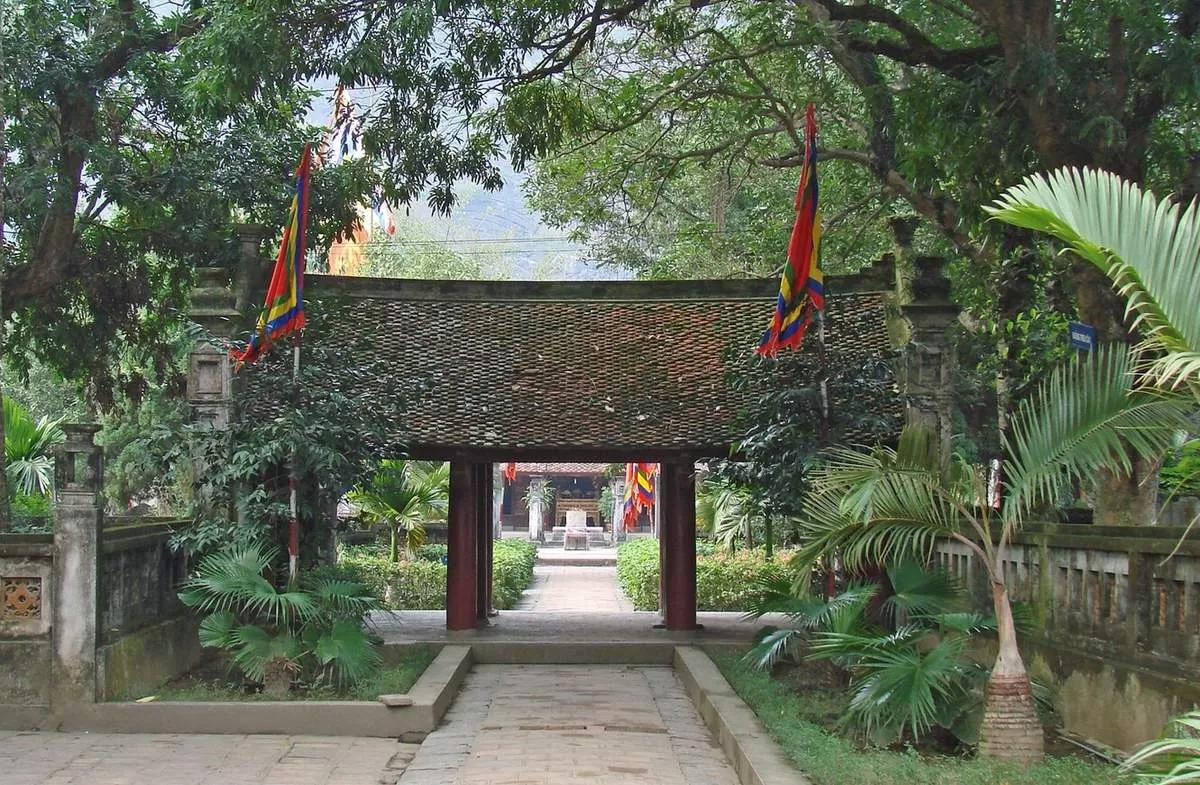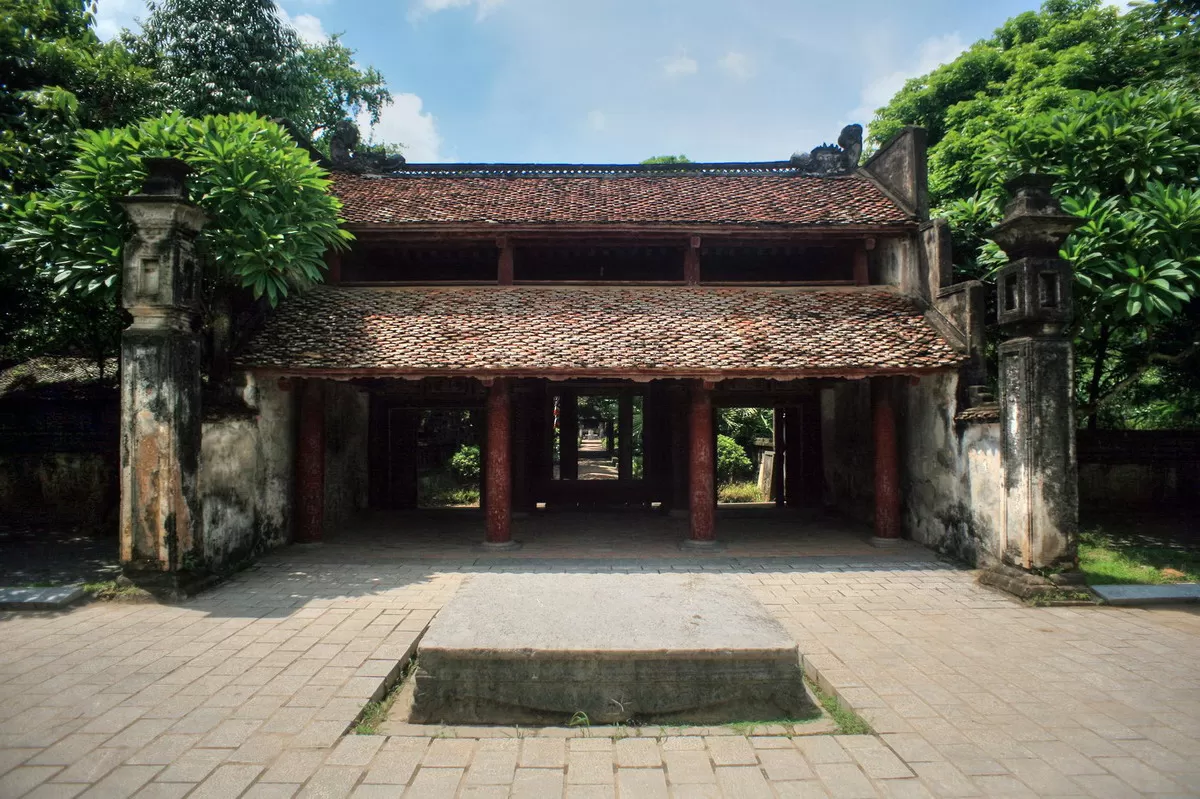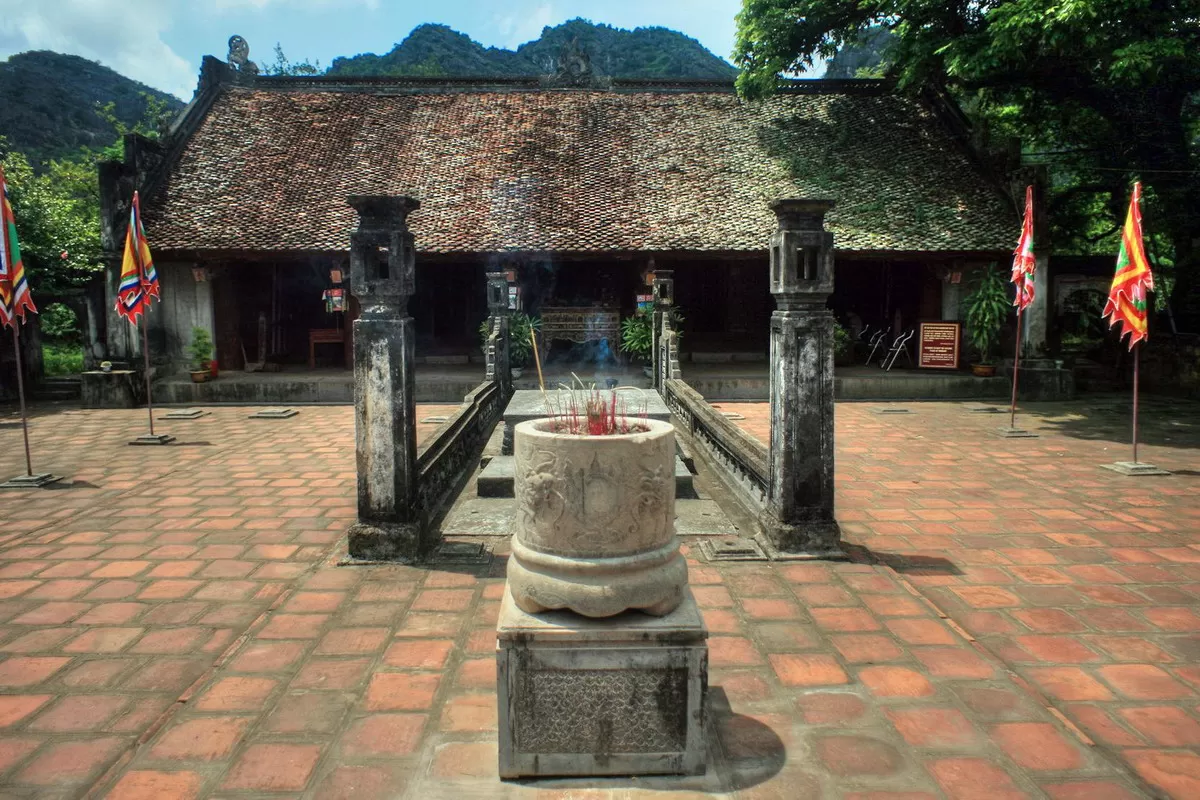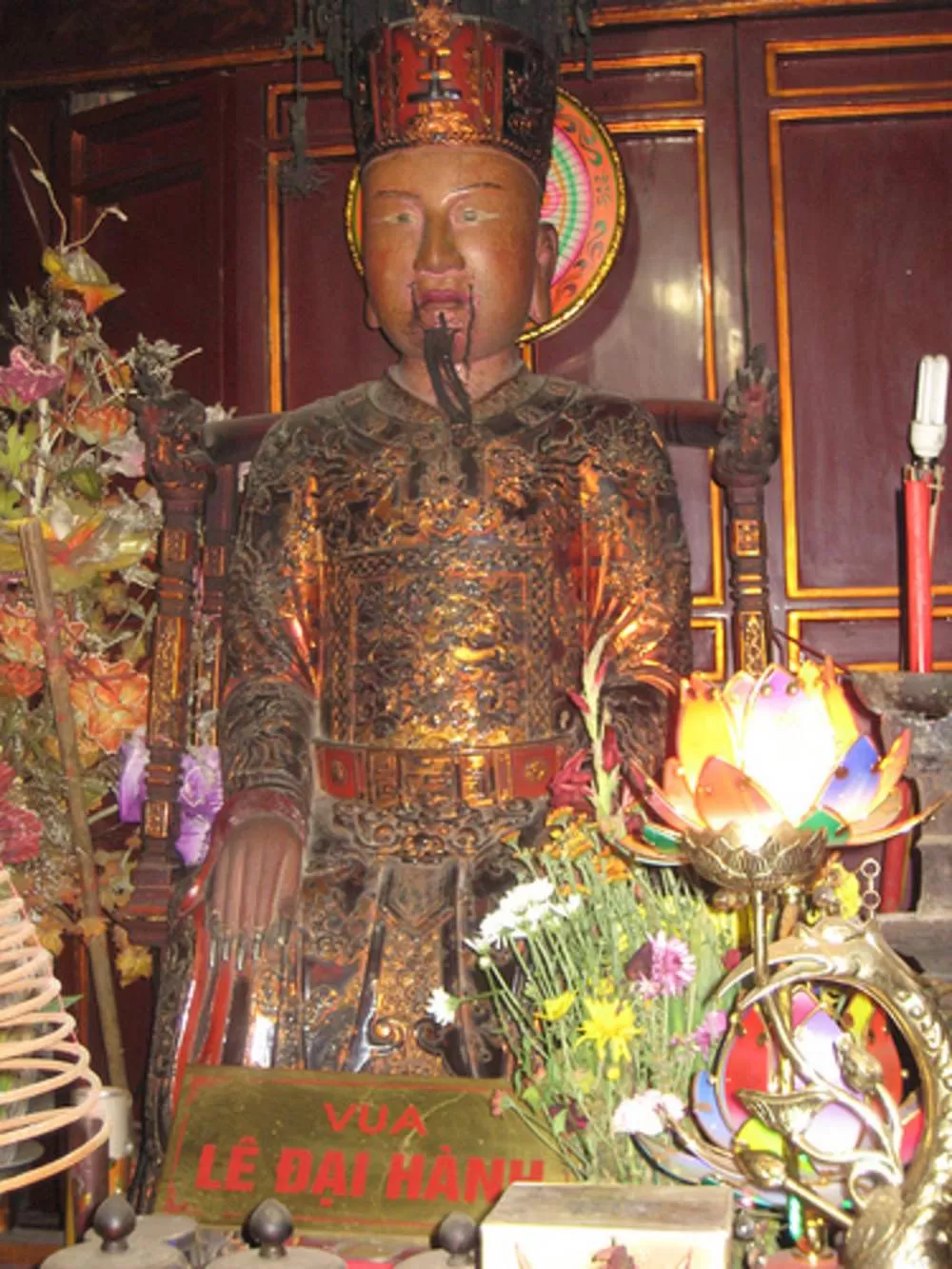📚 Unlock the World of AI and Humanity with These Two Free Books! 🚀
Dive into the thrilling realms of artificial intelligence and humanity with "The ECHO Conundrum" and "Awakening: Machines Dream of Being Human". These thought-provoking novels are FREE this week! Don't miss the chance to explore stories that challenge the boundaries of technology and what it means to be human.
Read More & Download
Have you ever wandered into a place where history breathes through its architectural marvels? The King Le Dai Hanh Temple, nestled in the heart of Hoa Lu Ancient Capital in Ninh Binh, is one such treasure. This temple stands not only as a tribute to the revered King Le Dai Hanh but also as a representative of the unique artistic heritage of the late Le dynasty. Join Unilever.edu.vn on an exploration of this enchanting destination that weaves together the threads of Vietnam’s rich history, culture, and artistry.
An Overview of King Le Dai Hanh Temple
Where is King Le Dai Hanh Temple Located?
If you are planning a visit to Ninh Binh, the King Le Dai Hanh Temple is a must-see! Situated in Truong Yen Ha village, just 300 meters north of the King Dinh Tien Hoang Temple, this ancient shrine has stood the test of time for over a century. Open from 8:00 AM to 5:00 PM, the entrance fee is affordable, making it accessible to everyone:
- Adults and high school students: 20,000 VND
- Primary and secondary school students: 10,000 VND
- Children under 1 meter: Free entry
The temple is not merely a historical site; it is also renowned for its remarkable architectural features that reflect the artistry of its time. For history enthusiasts and those intrigued by ancient architecture, visiting this temple is an excellent choice.
 The King Le Dai Hanh Temple – A Unique Architectural Heritage
The King Le Dai Hanh Temple – A Unique Architectural Heritage
Ideal Times to Visit King Le Dai Hanh Temple
While you can visit the temple any time of the year, spring is the most delightful season for a journey through Ninh Binh’s cultural landscape. During this time, the scenery turns lush green, temperatures are mild, and the air is filled with the excitement of numerous festivals. However, if you prefer tranquility, consider visiting in the remaining months. Particularly from March to May, the Northern weather is pleasantly warm, ensuring a memorable visit.
Getting to King Le Dai Hanh Temple
Traveling from Hanoi to Ninh Binh is quite convenient. You can choose to take a train, which ranges in price from 100,000 to 200,000 VND, depending on the service and class. Alternatively, bus services are available from bus stations like Bat Giap or My Dinh, with fares ranging from 60,000 to 70,000 VND. For a more adventurous route, renting a motorbike can provide a fantastic experience as you ride along the Phap Van-Cau Gie highway towards Ninh Binh.
Once you arrive in Ninh Binh, head towards Hoa Lu Ancient Capital. After purchasing a ticket, you can make your way to the temple, which is nestled within this remarkable cultural landscape.
 The King Le Dai Hanh Temple – Reflecting Vietnam's Rich Heritage
The King Le Dai Hanh Temple – Reflecting Vietnam's Rich Heritage
Exploring the Unique Features of King Le Dai Hanh Temple
Remarkable Architectural Elements
Constructed during the same era as the King Dinh Tien Hoang Temple in the 17th century, the King Le Dai Hanh Temple exhibits architectural similarities to its counterpart but on a smaller scale. The temple follows the classic temple shape of the Late Le architectural period, maintaining the techniques and carvings typical of that time.
Tradition says that King Le Dai Hanh Temple was built over the previous site of the royal palace in Hoa Lu. Archaeological excavations conducted in 1998 confirmed this theory by uncovering a significant area of 200 square meters to the south of the temple grounds.
The temple comprises three main sections: the Bai Duong (worship hall), the Thieu Huong (incense offering area), and the Chinh Cung (main worship area). It features low structures that boast wooden beams and columns, adorned with intricate golden carvings that evoke a sense of majestic antiquity.
📚 Unlock the World of AI and Humanity with These Two Free Books! 🚀
Dive into the thrilling realms of artificial intelligence and humanity with "The ECHO Conundrum" and "Awakening: Machines Dream of Being Human". These thought-provoking novels are FREE this week! Don't miss the chance to explore stories that challenge the boundaries of technology and what it means to be human.
Read More & Download
The Bai Duong consists of five rooms, with three large gilded calligraphy boards. The central board reads “Trường Xuân Linh Tích,” while the board on the right states “Dương Thần Vũ” and on the left, “Xuất Thánh Minh.” Furthermore, the Thieu Huong hall, styled in the traditional bamboo lens architecture, is dedicated to the four pillars of the Later Le dynasty.
Meanwhile, the Chinh Cung serves as the heart of the temple. Here, a statue of King Le Dai Hanh sits on a stone pedestal, exuding an aura of authority and reverence. To the left of the king’s statue, you’ll find the statue of Queen Duong Van Nga, while to the right resides the statue of Le Long Dinh, a significant figure of the Later Le royal lineage.
 Inside the King Le Dai Hanh Temple – A Testament to Vietnam's Artistic Legacy
Inside the King Le Dai Hanh Temple – A Testament to Vietnam's Artistic Legacy
Distinctive Features of King Le Dai Hanh Temple
One of the most noticeable features of the temple is its neatly paved pathway leading to the entrance. This path takes you through the outer gate, where on the left stands a 3-meter high stone relief shaped like a mythical phoenix, radiating majesty. On the right, an ancient banyan tree, over 300 years old, enriches the temple’s serene atmosphere.
Within the inner courtyard, you’ll encounter perfectly aligned flower gardens and rows of pavilions, creating a harmonious balance with the distinctive stone and wood sculptures that characterize the Late Le period. The King Le Dai Hanh Temple not only embodies architectural brilliance but also represents a vital part of Vietnam’s spiritual and historical journey.
 The Scenic Stone Pathway of King Le Dai Hanh Temple
The Scenic Stone Pathway of King Le Dai Hanh Temple
Tips for Visiting King Le Dai Hanh Temple
Visiting the King Le Dai Hanh Temple is not just about sightseeing; it’s also steeped in spiritual significance. Here are a few essential tips from Unilever.edu.vn for a respectful and enjoyable visit:
- Dress respectfully: Opt for clothing that is modest and appropriate for a sacred space to maintain decorum and show respect.
- Follow the regulations: Be sure to adhere to the rules set by the temple’s management and avoid defacing the structure with unnecessary markings.
- Engage with the caretakers: If you’re curious about the history and culture surrounding the temple, don’t hesitate to ask the caretakers or guides for insights.
- Preserve the peace: Maintain silence and avoid disruptive behavior to uphold the solemnity of the temple atmosphere.
- Cleanliness is key: Dispose of your waste properly to keep the temple grounds pristine and reflective of its heritage.
Don’t forget that the Hoa Lu Ancient Capital offers many other iconic attractions, such as the King Dinh Tien Hoang Temple and Thiên Tôn Pagoda, allowing you to maximize your cultural journey here.
Conclusion
The King Le Dai Hanh Temple is not merely a place of worship; it is a living testament to Vietnam’s architectural brilliance and deep historical roots. This sacred site encapsulates the reverence of the Vietnamese people towards their ancestors and the heritage of the nation. The journey to this temple is an opportunity for both reflection and admiration, and its unique features promise to leave an indelible mark on every visitor. So pack your bags for Ninh Binh, and don’t forget to pay a visit to this cultural gem that awaits!
📚 Unlock the World of AI and Humanity with These Two Free Books! 🚀
Dive into the thrilling realms of artificial intelligence and humanity with "The ECHO Conundrum" and "Awakening: Machines Dream of Being Human". These thought-provoking novels are FREE this week! Don't miss the chance to explore stories that challenge the boundaries of technology and what it means to be human.
Read More & Download


